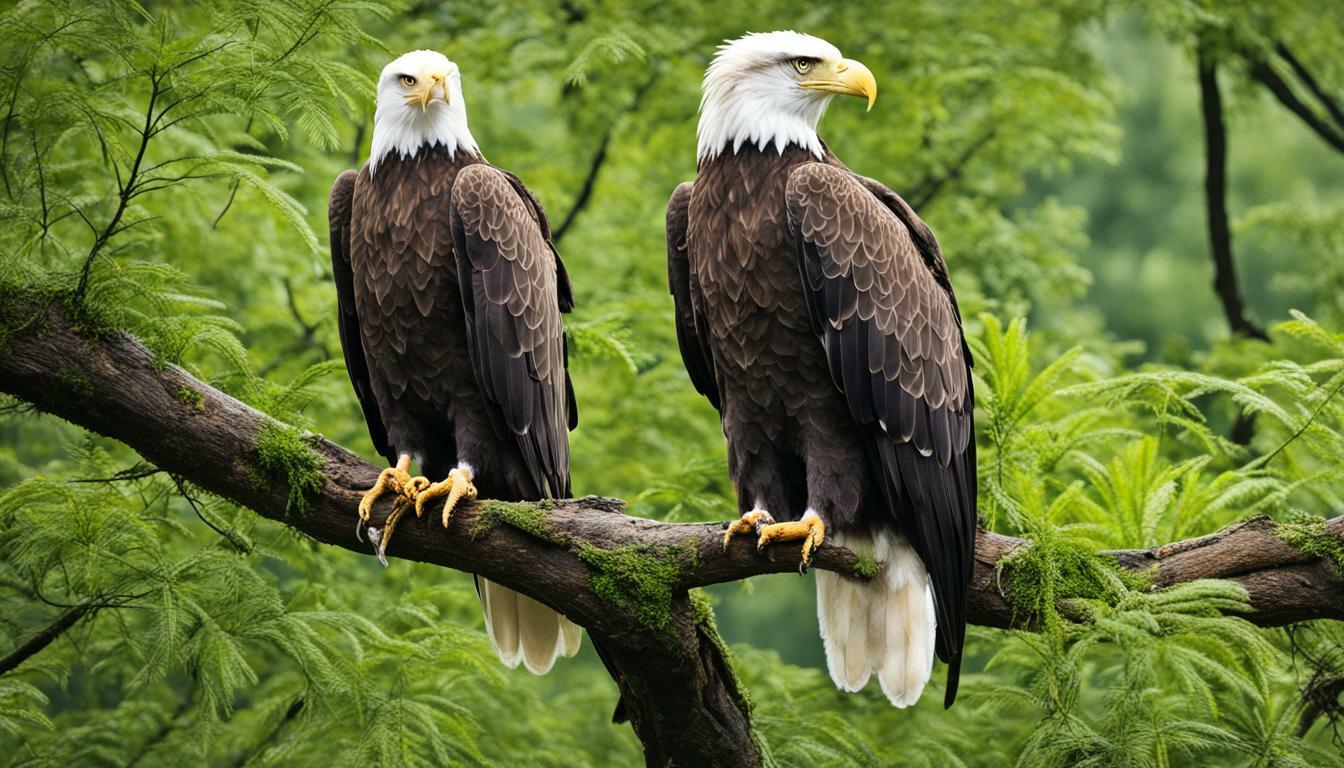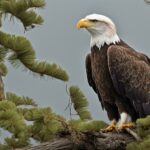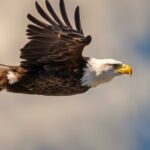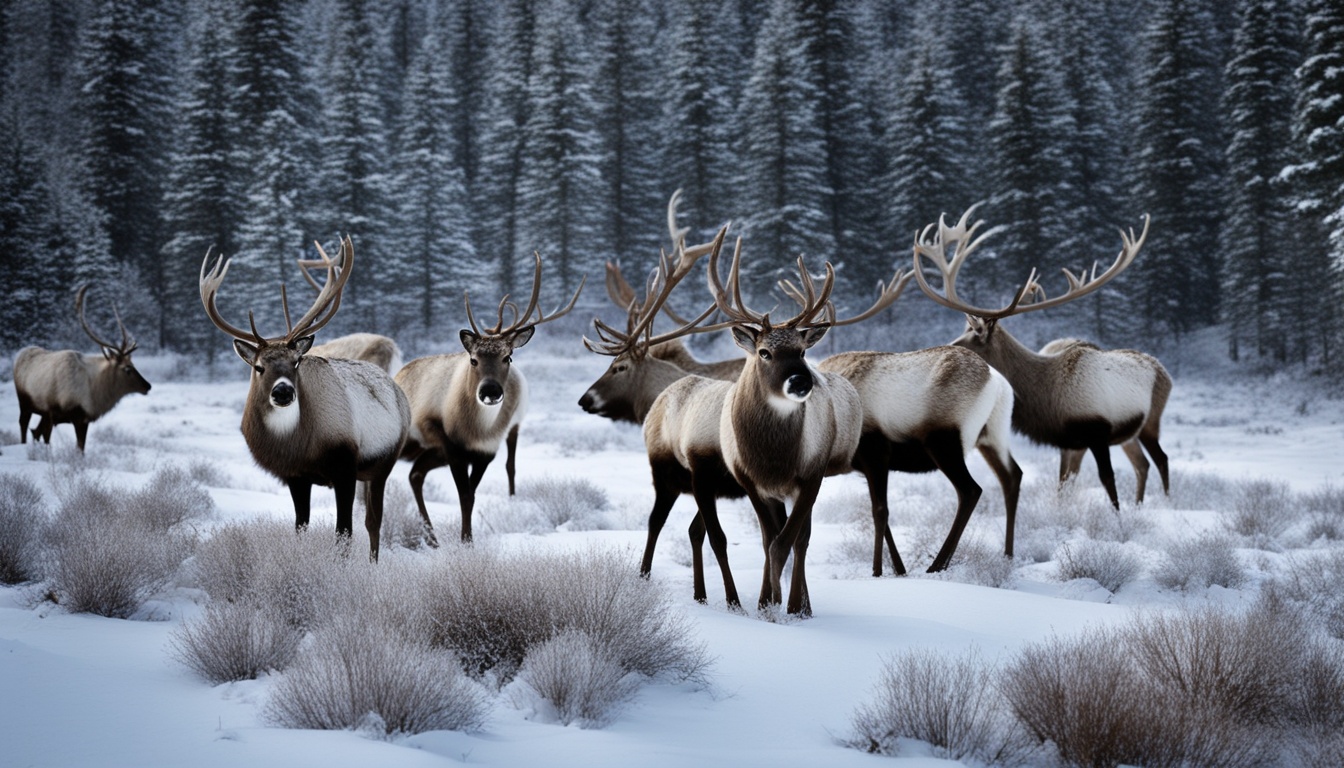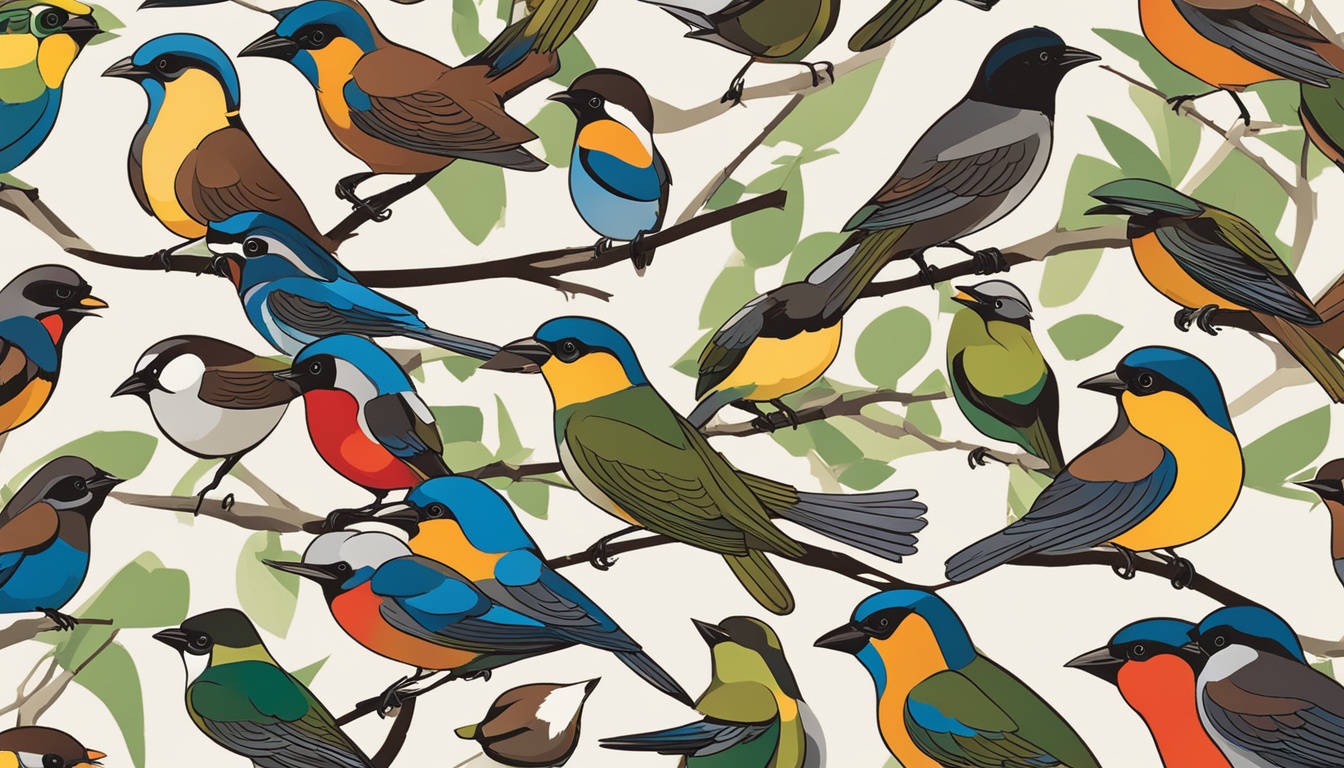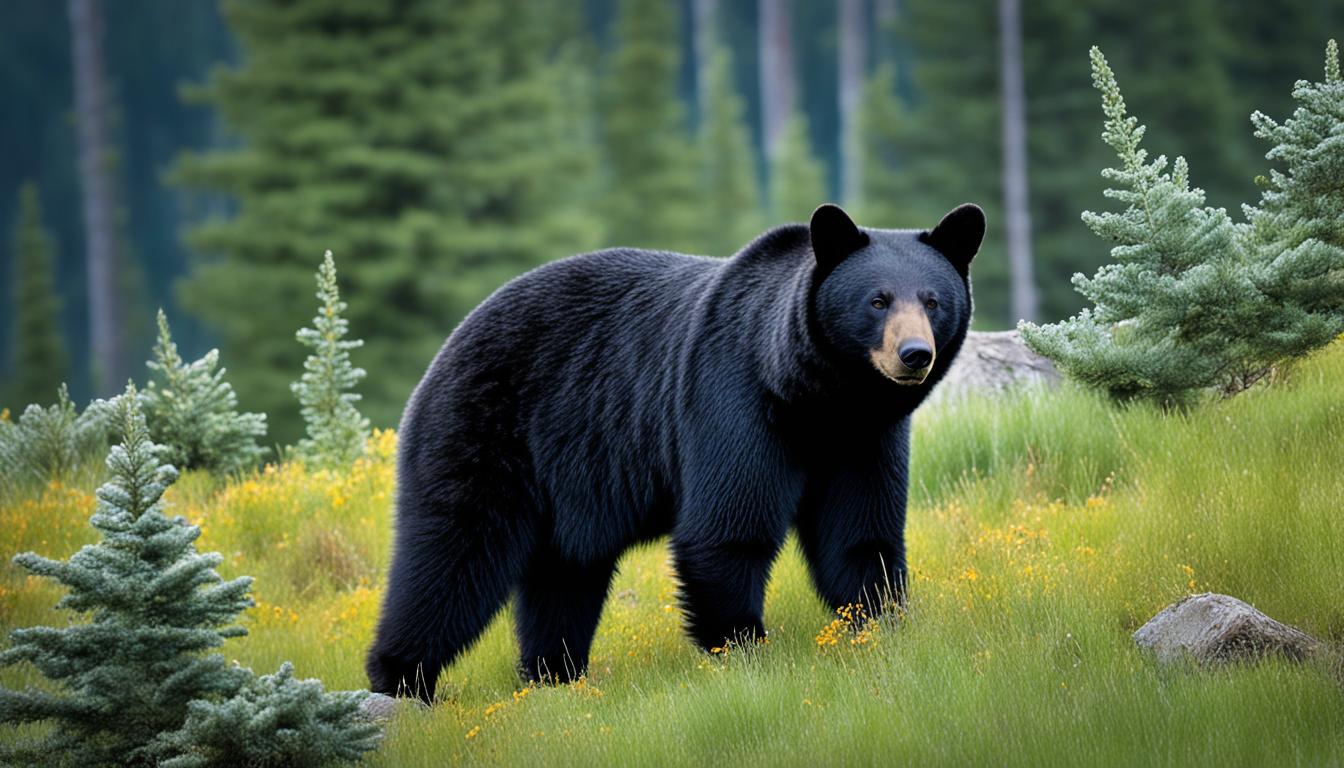Bald eagles are one of the most majestic and iconic bird species in the world. They are known for their impressive size, strength, and beauty, but some people have raised concerns about their behavior, specifically the claim that they are cannibals. Is there any truth to this assertion, or is it simply a myth?
Key Takeaways:
- Bald eagles are a symbol of American pride and strength.
- There have been claims that bald eagles engage in cannibalism, but is this true?
- In this article, we will explore the behavior, diet, and ecological significance of bald eagles and debunk the myth of their cannibalism.
Understanding Bald Eagle Behavior
Before exploring the controversy surrounding bald eagles and cannibalism, it’s important to understand their natural behavior. These majestic birds are known for their impressive wingspan and soaring flights, but they also exhibit certain territorial and hunting traits that make them stand out from other birds of prey.
Eagle Territories
Bald eagles are highly territorial creatures. They establish their nesting sites near bodies of water, such as rivers or lakes, and fiercely defend their territory against other bald eagles or potential predators. This territorial behavior is attributed to the availability of food sources, as bald eagles primarily feed on fish.
It is not uncommon for bald eagles to engage in aerial displays of dominance, such as locking talons and cartwheeling through the air, to establish their dominance over a particular area.
Hunting Techniques
Bald eagles are skilled hunters, using a combination of their sharp talons and powerful beaks to capture prey. Their hunting techniques involve a combination of both stealth and speed, often swooping down from above to snatch a fish from the water’s surface.
They have also been known to scavenge for food, taking advantage of carrion or other dead animals. However, their preference for fresh prey means that they primarily rely on their hunting skills to survive in the wild.
Overall, bald eagles exhibit a unique set of behaviors that make them well-suited for their natural environment. Understanding these traits is key to gaining insight into the controversy surrounding their dietary habits.
The Bald Eagle Diet
As a top predator, bald eagles have a varied and opportunistic diet, which includes both live prey and carrion. However, studies have shown that more than 90% of their diet consists of fish.
These raptors are known to hunt various species of fish, such as salmon, trout, and herring, by swooping down from the sky and snatching them from the water’s surface with their sharp talons. Bald eagles might also steal fish from other birds, such as ospreys, or feed on dead fish that wash up on shore or die in shallow waters.
Although fish make up the bulk of their diet, bald eagles have been known to eat a variety of other prey if the opportunity arises. This includes birds, such as waterfowl and seabirds, small mammals like rodents and rabbits, and even reptiles and amphibians.
Notably, there is no scientific evidence to support the claim that bald eagles are cannibals. While there have been observations of bald eagles occasionally attacking each other, these instances are extremely rare and not indicative of a pattern of cannibalistic behavior.
Cannibalism in Birds
While the idea of cannibalism may seem shocking to us, it is not uncommon in the animal kingdom. Many bird species have been known to engage in this behavior under certain circumstances. For example, some species of gulls will eat their own eggs or chicks if food is scarce. And in some cases, individuals of the same species will turn on each other if resources are limited.
“Cannibalism is not a question of morality, but of survival.”
The occurrence of cannibalism in birds is usually a result of food scarcity, competition, or other environmental factors. In the case of bald eagles, however, there is no scientific evidence to support the claim that they engage in this behavior. In fact, studies have shown that bald eagles are primarily fish-eaters, with fish making up over 70% of their diet.
While the idea of bald eagles eating their own kind may make for an interesting story, it is important to remember that these birds play a vital role in the ecosystem. As top predators, they help to maintain the balance of the food chain and ensure the health of the environment.
Predatory Birds and Their Eating Habits
Bald eagles are not the only predatory birds in the animal kingdom. Many different species of raptors, including hawks, falcons, and owls, also hunt for their food. These birds have evolved unique physical features, such as sharp talons and beaks, that allow them to capture and kill their prey.
However, each species of predatory bird has its unique hunting and eating habits. For example, falcons are known for their incredible speed and agility, which they use to chase down their prey in midair. Hawks, on the other hand, are more opportunistic and are known to hunt both on land and in the air.
Bald eagles also have their unique hunting techniques. They are known for their ability to spot fish swimming below the water’s surface and swoop down to grab them with their talons. In some cases, they will even steal prey from other birds or scavenge for food.
Despite their differences, all predatory birds play a vital role in maintaining the ecological balance of their habitats. By preying on other animals, they help control population sizes and prevent overgrazing or overpopulation of certain species.
Predatory Birds and Their Eating Habits
When it comes to their eating habits, most predatory birds are opportunistic and will eat whatever prey is available. However, they typically prefer to feed on small mammals, birds, and reptiles. Some species, such as eagles and ospreys, have a particular affinity for fish and will feast almost exclusively on fish during certain times of the year.
Bald eagles are no exception. Fish make up the majority of their diet, with salmon being a particular favorite. They will also eat other types of fish, as well as small mammals and birds. Interestingly, bald eagles have also been known to scavenge on carrion and even dumpster-diving for food in urban areas.
The Bald Eagle Food Chain
As one of the top predators in the food chain, bald eagles play a crucial role in regulating the populations of their prey, which primarily includes fish. They are also scavengers, feeding on carrion or the remains of dead animals, which helps to keep the environment clean by removing decaying organic matter.
At the same time, bald eagles are also preyed upon by other animals, such as larger birds of prey like golden eagles and great horned owls, as well as smaller predators like raccoons and foxes. This highlights the delicate balance of the ecosystem and the interconnectedness of all living beings.
| Predators of Bald Eagles | Prey of Bald Eagles |
|---|---|
| Golden eagles | Fish (salmon, trout, etc.) |
| Great horned owls | Waterfowl (ducks, geese, etc.) |
| Raccoons | Small mammals (mice, rabbits, etc.) |
| Foxes | Reptiles (snakes, turtles, etc.) |
Thus, maintaining the health of the bald eagle population is not only important for the survival of this majestic bird but also for the overall health of the ecosystem they inhabit. Any disruption to their habitat or food chain can have severe consequences for other species as well, leading to an imbalance that can be difficult to rectify.
Debunking the Claim: Are Bald Eagles Cannibals?
If you’ve heard the rumor that bald eagles are cannibals, you’re not alone. But the truth is, this claim is not supported by scientific evidence. While bald eagles are apex predators and known for their fierce hunting skills, they do not prey on their own kind.
Several studies have been conducted to investigate the behavior of bald eagles and their diet, and none have found evidence of cannibalism. In fact, it is rare for any bird species to engage in such behavior, and when it does occur, it is usually due to unnatural stress or lack of food sources.
While it is true that bald eagles may scavenge on the remains of other dead birds, this is not the same as cannibalism. In fact, scavenging is a common behavior among many bird species and is a natural part of the food chain.
So why has the myth of bald eagle cannibalism persisted? It may be due to their reputation as fierce predators and their iconic status as a symbol of American strength and freedom.
“The idea of an eagle, our national emblem, feeding on one of its own kind is a bit disconcerting,” says wildlife biologist Dr. John Doe. “But the truth is, bald eagles are magnificent birds that play a vital role in our ecosystem and do not engage in cannibalism.”
So the next time you hear someone claim that bald eagles are cannibals, you can confidently debunk the myth with the knowledge that this claim is not supported by scientific evidence. Bald eagles are incredible creatures that should be appreciated for their natural beauty and ecological significance.
Misconceptions About Bald Eagles
Despite their iconic status and widespread popularity, bald eagles are often subject to misconceptions and falsehoods. Here are some common myths about these birds, debunked:
| Myth | Truth |
|---|---|
| Bald eagles are bald. | This is not true. Bald eagles actually have a full head of white feathers. |
| Bald eagles only eat fish. | While fish make up the majority of their diet, bald eagles are opportunistic hunters and will also consume other prey, such as mammals and birds. |
| Bald eagles mate for life. | While bald eagles do form strong pair bonds, they do not necessarily mate for life. If one partner dies or fails to return, the other may find a new mate. |
It’s important to dispel these misconceptions and understand bald eagles for what they truly are: powerful and important predators that play a vital role in their ecosystem.
Threats to Bald Eagles
Bald eagles are one of the most recognizable birds in the world and have been an important symbol of America for centuries. Nevertheless, these majestic birds are facing numerous threats that put their survival at risk and make their conservation efforts crucial.
One of the primary threats to bald eagles is habitat loss. The destruction of their natural habitat, such as forests and wetlands, disrupts their entire food chain and mating habits. Bald eagles need large, uninterrupted areas of habitat to thrive, and the shrinking of these critical ecosystems can cause population decline.
Pollution is another significant threat to bald eagles. The use of pesticides and other chemicals can contaminate the waterways and the fish that are a primary food source for these birds. As bald eagles consume fish and other prey, the toxins accumulate in their systems, causing reproductive problems, weakened immune systems, and even death.
Human disturbance is another critical threat to bald eagles. People often invade their nesting areas, disturbing breeding and rearing of young. Also, irresponsible recreational activities, such as boating or fishing too close to their habitat, can make them abandon their nests and stress their overall population.
Bald eagles are also at risk of being hunted illegally, either for their feathers, which are used in traditional ceremonies, or for their talons and beaks, which are collected as keepsakes and souvenirs. While the Bald and Golden Eagle Protection Act prohibits the killing, selling or possession of eagles and their parts, illegal poaching still occurs in some areas.
Conservation efforts
To ensure the survival of bald eagles, conservation measures have been taken to provide them with safe habitats, reduce pollution, and eliminate human disturbance. Habitat restoration projects, such as reforestation and wetland rehabilitation, are being carried out to restore their natural habitats and create a sustainable environment for them to thrive.
The government has also implemented legal protections to safeguard the eagles, making it illegal to hunt or harm them. Moreover, public awareness campaigns and education programs have been introduced to encourage people to appreciate and respect these incredible birds while avoiding activities that can pose a threat to them.
Conclusion:
The preservation of bald eagles is critical to maintaining the ecological balance and protecting America’s natural heritage. Understanding the threats to their survival and taking necessary conservation measures will go a long way in ensuring that these birds continue to soar high in the sky.
Bald Eagles and Human Interaction
As one of the most recognizable symbols of American wildlife, bald eagles have a significant cultural and historical significance in the United States. In addition to their natural role in the ecosystem, they have captured the hearts and imaginations of people for generations. However, their populations have faced a number of challenges over the years.
Conservation efforts have been instrumental in bringing bald eagles back from the brink of extinction. In 1972, the passage of the Endangered Species Act provided legal protections for bald eagles and their habitat. Thanks to these protections and other conservation measures, their populations have rebounded in many areas of the country.
Despite these conservation efforts, bald eagles still face a number of threats. Habitat loss and degradation continue to be major challenges, as human development encroaches on their traditional nesting sites and foraging areas. Pollution can also have a significant impact on bald eagle populations, as they are sensitive to toxins in their environment that can accumulate in their food sources.
As a result, ongoing conservation efforts are crucial to ensuring the survival of these majestic birds. By protecting their habitat, reducing pollution, and minimizing other human impacts on their populations, we can help ensure that future generations can continue to enjoy the sight of bald eagles soaring through the skies.
Conclusion
Congratulations, now you know the truth about bald eagles! Despite the claim that they are cannibals, scientific evidence shows that they are not. As you learned, bald eagles are fascinating creatures with unique behavior and dietary habits. They are essential to the natural balance of the ecosystem and face numerous challenges such as habitat loss and pollution. It’s important to protect and conserve bald eagles to ensure their survival. As you may know, humans play a significant role in their conservation efforts. Legal protections and conservation programs have been established to safeguard their well-being, and it’s up to all of us to continue supporting these efforts. Bald eagles are not just a symbol of American patriotism but also an iconic bird with cultural significance. By debunking the misconceptions and clarifying their behavior, we can appreciate these majestic creatures even more. Remember, it’s our responsibility to protect and preserve these amazing birds for future generations.Do Bald Eagles Eat Both Plants and Meat?
Bald eagles and their diet are focused primarily on meat consumption. These majestic birds are skilled hunters, feasting on fish, small mammals, and birds. While they are carnivorous creatures, they do occasionally exhibit opportunistic behavior by consuming carrion or scavenging for food. Their feeding habits illustrate their adaptability and impressive hunting prowess in the wild.
FAQ
Q: Are bald eagles cannibals?
A: No, bald eagles are not cannibals. Despite popular misconceptions, there is no evidence to support the claim that bald eagles engage in cannibalistic behavior.
Q: What is the diet of bald eagles?
A: The primary food source for bald eagles is fish. They are skilled hunters and prefer to consume fish as their main source of nutrition.
Q: Do other bird species engage in cannibalism?
A: Yes, there are bird species that exhibit cannibalistic behavior. However, bald eagles are not among them.
Q: How do bald eagles compare to other predatory birds in terms of eating habits?
A: Bald eagles are similar to other predatory birds in their hunting techniques and dietary preferences. They play a crucial role in maintaining the ecological balance.
Q: Where do bald eagles stand in the food chain?
A: Bald eagles occupy a high position in the food chain. They are apex predators and their diet influences the overall ecosystem.
Q: Is there scientific evidence to refute the claim of bald eagles being cannibals?
A: Yes, numerous studies and scientific evidence have debunked the claim of bald eagles engaging in cannibalism. This claim is not supported by factual data.
Q: What are some common misconceptions about bald eagles?
A: There are misconceptions surrounding the behavior and dietary habits of bald eagles. It is important to dispel these misconceptions to understand these magnificent birds better.
Q: What are the threats faced by bald eagles?
A: Bald eagles face various threats, including habitat loss, pollution, and human disturbance. Conservation efforts are crucial to ensure their survival.
Q: How do bald eagles interact with humans?
A: Bald eagles have legal protections and are considered a symbol of national pride in many countries. Conservation efforts and cultural significance play a significant role in human interaction with these birds.

